#castelnaudary
Text

Butter making in the Château des Cheminières, Castelnaudary, Languedoc region of France
French vintage postcard
#chteau#historic#region#photography#postal#ansichtskarte#photo#sepia#castelnaudary#vintage#cheminires#postcard#languedoc#france#briefkaart#making#the château des cheminières#postkarte#tarjeta#carte postale#ephemera#butter#postkaart#french
4 notes
·
View notes
Text

🫘La base d'un été réussi...🫘
🛍️ > jaimelagrenadineshop.com
3 notes
·
View notes
Text

4e Régiment etranger - 1992
2 notes
·
View notes
Text
Grande Confrérie du Cassoulet de Castelnaudary
Août 2024. Enchanté et honoré d'avoir été admis, en qualité de dignitaire dans cette illustre association de défense du Cassoulet, lors du 276ème chapitre qui s'est déroulé pendant la fête du Cassoulet de la capitale du Lauragais. Merci à mon "parrain", Laurent Spanghero, de m'avoir fait ce beau cadeau !




0 notes
Text
Occitania 3.-De Sant Felix Lauragais a Castelnaudary
Visitamos zona cátara y Canal del Midi, Carcassonne y más.

St Felix Lauragais , aquí se celebró el Primer Concilio Cátaro. Y tiene buenas vistas sobre la Montaña Negra y los Pirineos. Fue una Bastida y tiene Colegiata,del siglo XIV, un castillo...


Pasando por Revel, llegas a Saissac. Está en la Montaña Negra, y tiene los restos de un Castillo Cátaro del siglo X y restos de fortificaciones.

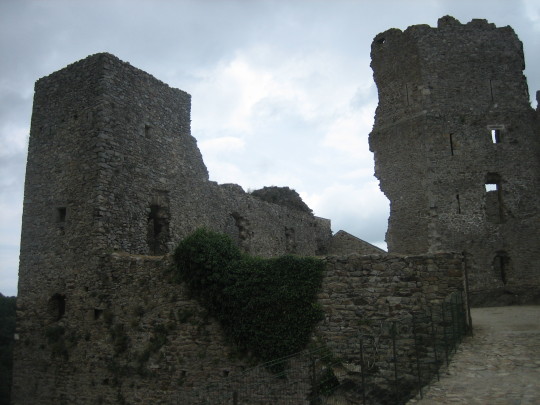
Lastours, Está en el país cátaro y aquí hay cuatro castillos.
Caunes-Minervois, Está en el Minervois, rodeada de Gargantas y cerros. Es famosa por estar en el centro del País Cátaro, por sus callejuelas y su Abadía Románica.
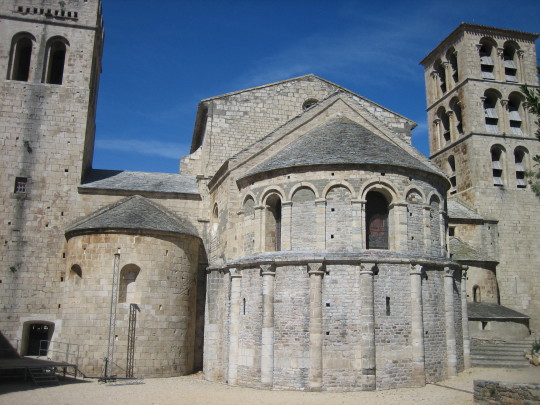
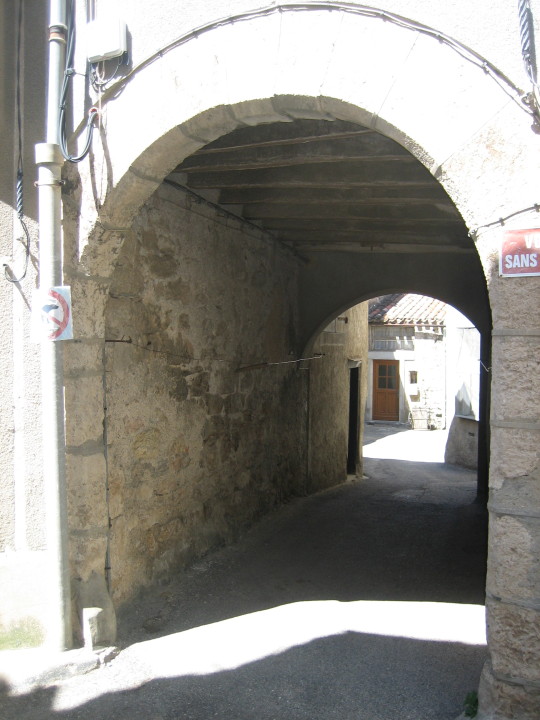

Carcassonne, Sus 3 km de murallas y 52 torres. El Castillo del siglo XII, la famosa dinastía Trencavel, La Ciudad Medieval más visitada.





Y por último Castelnaudary. Está en el Lauragais. Construída alrededor de un castillo en el siglo XII, sitiada en la guerra contra los cátaros. Demolieron su castillo, pero en 1681, atraviesa por la ciudad el Canal del Midi, que uniría el Mediterráneo y el Atlántico, navegable. Una maravilla.

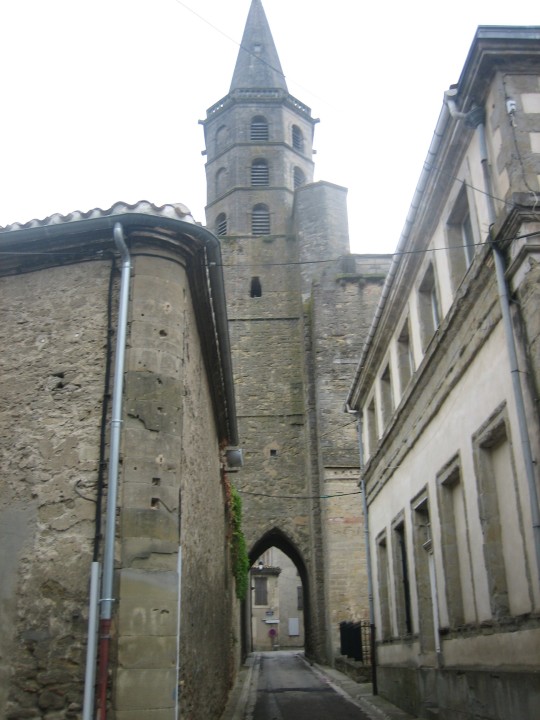

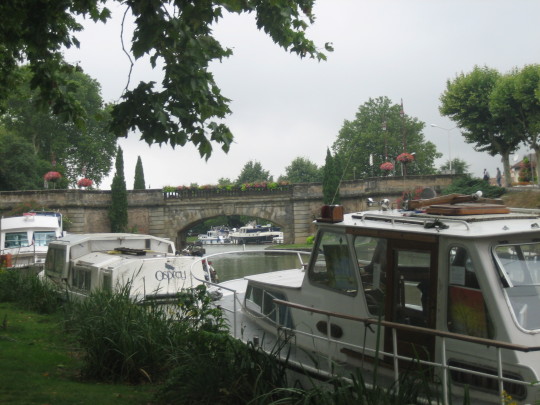
0 notes
Text
Giuseppe Donizetti — served Napoleon on Elba and accompanied him during the Hundred Days

Portrait of Giuseppe Donizetti later in life
Giuseppe Donizetti was born into poverty in 1788, in the Northern Italian city of Bergamo. The eldest of his siblings, he worked from a young age, training as a tailor’s apprentice. His true talent was in music, which was spotted early on in his life.
Giuseppe was conscripted in 1808 at the age of 20. He served the Napoleonic Kingdom of Italy in the Seventh Italian Regiment. He fought against Austria in the War of the 5th Coalition in 1809. He spent the years of 1811, 1812 and 1813 in Spain.
In 1811, he was became ill en route to Spain and was hospitalized at Castelnaudary in France. 43 years later in 1854, he wrote about it to the court of the Ottoman Empire:
“Constantinople, November 22, 1854. Mémoire to His Highness Achmed-Fethy Pasha. Finding myself in a comfortable position thanks to the beneficences of Our August and Glorious Sovereign, I cede to the Hospital of Castelnaudary (Aude), in which I was ill in 1811, the portion coming to me of the legacy left by the Emperor Napoleon I to the Battalion of the Island of Elba. The papers establishing my right to participate in the credit opened up by the Decree of August 5, 1854, issued at Biarritz by His Imperial Majesty the Emperor Napoleon III, I have been obliged to send to France at the time when I was honored with a brevet as Chevalier of the Legion of Honor. Your Highness's Very humble Servant, Joseph Donizetti.”
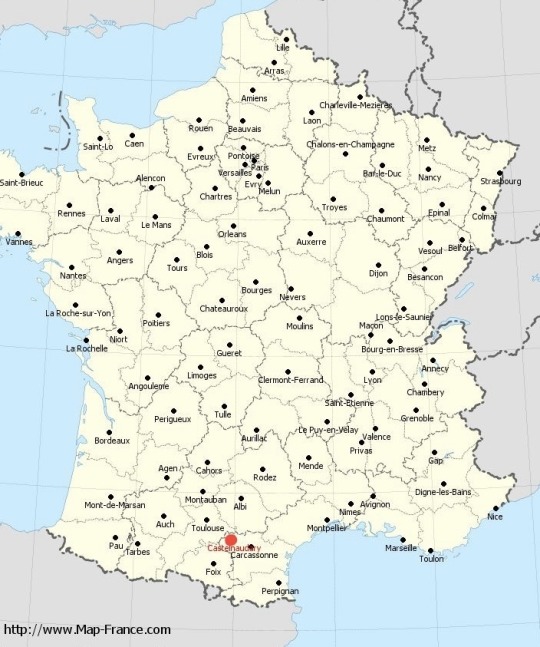

Location and photograph of Castelnaudary
After the dissolution of the Kingdom of Italy and the First French Empire, he enlisted in the French military and was stationed on the island of Elba as a military flutist. It was on Elba, in the town of Portoferraio, where he was married in 1815.
That same year, he accompanied Napoleon during the Hundred Days, traveling with him on the same ship from Elba to Antibes, France. He likely fought at the battle of Waterloo.
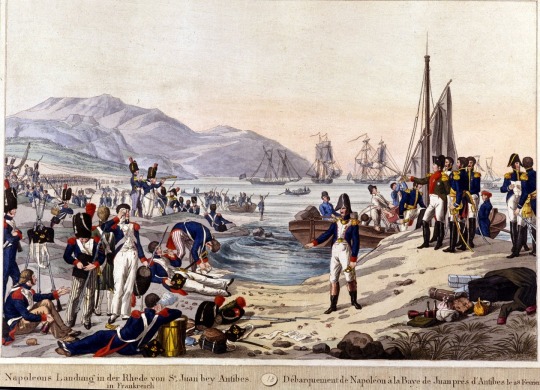
Landing of Napoleon I in Antibes in 1815
After Napoleon:
The Austrians took control of Northern Italy after the fall of Napoleon. According to the historian Emre Aracı, Giuseppe was “a greal admirer of Napoleon and the French […] Giuseppe strongly opposed his country’s domination by the Austrians. Evidence shows that he secretly took part in the Carbonari resistance and even appeared at court trials.”
Giuseppe Donizetti became a composer, and had a full career as Instructor General of the Imperial Ottoman Music. He even composed the first National Anthem of the Ottoman Empire, the Mecidiye Marşı. His main legacy is introducing Western marching music to the military of the Ottoman Empire.
He was employed by the Ottoman government on 17 September 1828 for an annual salary of 8,000 francs. This was considered a very high salary by his family. Giuseppe’s trouble with the Austrian authorities after the fall of Napoleon may have been a motivator for him to leave Italy. He moved to Constantinople at the age of 39 and spent the rest of his life there.
Giuseppe’s patron was Sultan Mahmud II, who ruled from 1808 to 1839, and Sultan Abdulmejid I, who ruled from 1839 to 1861.
According to the historian Emre Aracı:
“The Donizettis were so well-liked in the Ottoman capital that when fire broke out near their house Ahmet Fethi Pasha, the sultan's brother-in-law, ordered all the houses surrounding the maestro's home to be razed to the ground in order to prevent the flames reaching the building.”
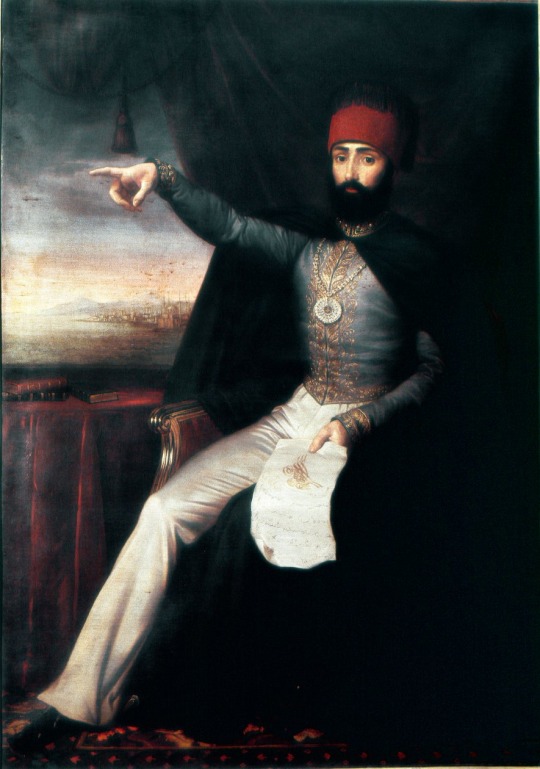
Sultan Mahmud II
His brother, Gaetano, called him his fratello turco— Turkish brother, writing to his friend that “He loves Constantinople, to which he owes everything.”
Giuseppe even encouraged his brother to move to Constantinople, but Gaetano declined. “I do not want to play the fool like my brother, the Bey, who, after having earned more than I perhaps, stays there in ancient Byzantium to scratch his belly between the plague and the stake,” wrote Gaetano.
Giuseppe moved to Constantinople two years after the creation of the Imperial Musical School (Muzıka-i Hümâyûn), which was an Ottoman institution which trained its students in Western style of music. He was specifically recruited as an expert to help lead this effort.

Giuseppe’s younger brother, Gaetano. By Francesco Coghetti, 1837
Gaetano Donizetti, though younger than Giuseppe, became the much more successful and internationally well-known brother, producing nearly 70 operas in his life. Gaetano is considered one of the most successful opera composers in history. Because of this, Giuseppe is widely known as Gaetano Donizetti’s brother. The historian Emre Aracı pointed out that this has actually been good for Giuseppe’s reputation because it has enabled him to be remembered when many other composers have been forgotten.
Both brothers were awarded the Ottoman Order of Nișan-i Iftihar. When Gaetano received the award at the Ottoman Embassy in Paris, he proudly said: “Napoleon belongs to two centuries, I to two religions.”
Burial:
Giuseppe died in 1856, and is buried in the vaults of St. Esprit Cathedral, on the European side of Constantinople, in the district called Pera (now called Beyoğlu). According to Emre Aracı, the district “was once the home of a thriving Christian community”. The Church was built in 1846, 10 years before Giuseppe died.
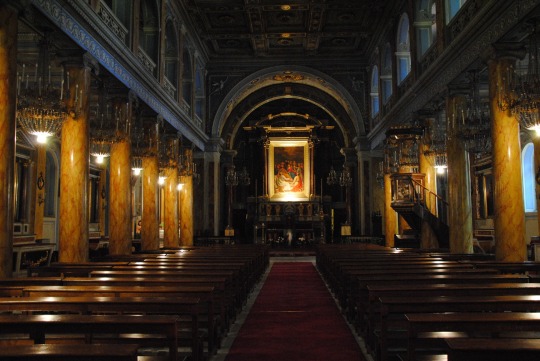
Interior of St. Esprit Cathedral
Giuseppe and his brother Gaetano are two great success stories and examples of people from impoverished backgrounds who go on to live prosperous and interesting lives.
Sources:
Herbert Weinstock, Donizetti and the World of Opera in Italy, Paris and Vienna in the First Half of the Nineteenth Century, 1963
Emre Aracı, Giuseppe Donizetti at the Ottoman Court: A Levantine Life, The Musical Times, Vol. 143, No. 1880 (Autumn, 2002), pp. 49-56
Emre Aracı, Giuseppe Donizetti Pasha and the Polyphonic Court Music of the Ottoman Empire, The Court Historian, Volume 7, 2 December 2002
Özgecan Karadağli, Western Performing Arts in the Late Ottoman Empire: Accommodation and Formation, 2020
#Giuseppe Donizetti#Donizetti#napoleonic era#napoleonic#Ottoman Empire#ottoman#napoleon#napoleon bonaparte#gaetano donizetti#turkey#turkish history#ottoman history#first french empire#French empire#history#19th century#france#french history#the hundred days#Francesco Coghetti#Istanbul#Constantinople#1800s#19th century history#Napoleon’s soldiers#opera#composers#composer
9 notes
·
View notes
Text

eos 70D, EF 200mm 2.8L II
f2.8 1/500s iso800
Mûres sur le bord du canal du midi prêt de Castelnaudary il y a quelques jours a 7h du matin.
Un peu de sérénité sucrée entre les groupes de légionnaires qui faisaient leur footing du matin (faut pas que je retourne me promener a cet endroit a cet heure la)
5 notes
·
View notes
Text
Direzioni
Dopo oltre 100 anni, Luigi XVI Re di Francia, per cercare di contenere il malcontento della popolazione, convoca gli Stati Generali. Istituito da Filippo Il Bello il 10 aprile 1302 nella chiesa di Notre-Dame a Parigi, dal 1400 si riuniva periodicamente, attraverso la convocazione dei Rappresentati dei Tre ordini Sociali, Nobiltà, Clero e Terzo Stato, secondo un particolare meccanismo: le elezioni dei rappresentanti procedevano attraverso una prima designazione di elettori locali (mediante gli Stati provinciali), i quali si riunivano nel capoluogo, elaboravano i cahiers de doléances (quaderni nei quali erano raccolte, per ciascun ordine, le lamentele e i voti da presentare al sovrano) ed eleggevano i deputati all’assemblea generale. Durante la convocazione, i 3 ordini si riunivano separatamente per redigere un cahier unico basato su quelli provinciali e un solo deputato per ogni stato parlava nell’assemblea generale e nell’ordine: clero, nobiltà e terzo stato. Gli Stati generali poi si scioglievano senza attendere la risposta del governo del re.
Il Terzo Stato, ormai maggioranza di fatto politica in Francia, voleva spezzare l’abituale legame tra Nobiltà e Clero, pertanto esce dagli Stati Generali e il 17 giugno forma l’Assemblea nazionale. Il Re in un primo momento cerca in tutti i modi di fermare l’operazione, tanto che il 20 giugno l’abituale sala dell'Hôtel des Menus-Plaisirs a Versailles è interdetta per “lavori di manutenzione”. Su proposta del deputato Joseph-Ignace Guillotin (si, l’uomo da cui prende il nome la ghigliottina, pensata come strumento per non far soffrire i condannati a morte) tutti si spostarono in una vicina sala adibita al gioco della pallacorda, un antenato del tennis; mentre il presidente dell'assemblea, l'astronomo Jean Sylvain Bailly si preoccupò di avvisare i colleghi di spostarsi. Una volta entrati, qualcuno offrì una sedia a Bailly il quale, invece di accettarla, si pose sopra ad un tavolo, rifiutando di sedersi mentre l'Assemblea si stava riunendo. Fu Bailly, da presidente dell'Assemblea, a proporre il famoso giuramento, ricordato come Giuramento della pallacorda - scritto da Jean-Baptiste-Pierre Bevière - e fu anche lui il primo a pronunciarlo e a sottoscriverlo. Tutti lo imitarono, firmando il documento, e giurando solennemente «di non separarsi mai e di riunirsi ovunque le circostanze l'avrebbero richiesto, fino a che non fosse stata stabilita e affermata su solide fondamenta una Costituzione per il regno francese». Ci fu un'unica eccezione, Joseph Martin-Dauch, deputato di Castelnaudary, che non giurò e si oppose apponendo la scritta "avversario" accanto alla sua firma. Bailly tentò di ottenere da Martin-Dauch una ritrattazione, ma senza successo.
Sin dalle prime riunioni, infatti, si schieravano alla destra del Presidente Bailly i membri dell’Assemblea con posizioni più moderate, più inclini al compromesso e alla trasformazione graduale del vecchio ordine. Nella parte sinistra, invece, sedevano i membri più rivoluzionari. Al centro quelli con posizioni intermedie. Fuori dall’assemblea, nascevano anche club privati in cui le idee dei vari gruppi politici venivano discusse e propagandate. Ne nasceranno moltissimi, ma all’inizio i più importanti sono i foglianti (di destra) e i giacobini (di sinistra): i foglianti prendono nome dall’ordine religioso fondato da Jean de la Barrière (Saint-Céré 1544 - Roma 1600), abate di Feuillant presso Tolosa, che avevano un monastero a Parigi; i giacobini prendono il loro nome per la stessa maniera, dato che il loro club aveva sede nell’ex convento parigino dei domenicani (Jacobins) nella via Saint-Honoré. Sorto nel maggio 1789 come Club breton, divenuto poi Société des amis de la constitution, nacque di indirizzo prevalentemente monarchico-costituzionale fino alla metà del 1790, orientandosi poi rapidamente verso concezioni di repubblicanesimo intransigente.
I primi provvedimenti sono di portata epocale: il 4 agosto vengono aboliti i privilegi feudali, il 26 dello stesso mese viene approvata la Dichiarazione dei diritti dell’uomo e del cittadino. Il re tenta di opporsi anche con l’uso dell’esercito, ma il 5 ottobre una folla di donne partita da Parigi (a cui si uniscono 20.000 guardie cittadine, compreso il loro capo Lafayette), arriva fino alla sua residenza di Versailles, e lo convince ad approvare i provvedimenti dell’Assemblea. È l’inizio della rivoluzione.
POST GENTILMENTE SCRITTO PER IL MINISTRO DELLA CULTURA CHE IERI HA DEFINITO DANTE ALIGHIERI UOMO DI DESTRA. GRAZIE
15 notes
·
View notes
Text
J69 ~ Bike Friday
Castelnaudary~Toulouse (65km)
Dernier jour de vélo pour boucler la boucle ! Le vent a légèrement faibli mais le froid s'est bien installé. Je m'active pour rester au chaud mais les pieds piquent un peu. La balade est assez rapide le long du canal et me voilà rentré à Toulouse !

Bien fatigué, je me repose quelques jours avant de repartir pour de nouvelles aventures (?)
🎶
4 notes
·
View notes
Text
este autor de Castelnaudary destaca este sistema de autodefesa em seu último livro #ÚltimasNotícias #Suiça
Hot News
Par
Editorial Lauragais
Publicado em
20 de setembro de 2024 às 20h19.
Veja minhas novidades
Siga Voix du Midi Lauragais
Pierre Paraire é definitivamente um autor produtivo. Seus escritos são ecléticos. Depois Azulem 2022, onde discutiu sua vida como artista, depois uma obra sobre política (O melhor da análise política) e um ensaio sobre treinamento de cães (Treine seu cachorro) em…
0 notes
Text
Cassoulet recipe – Castelnaudary style
New Post has been published on Sa7ab News
Cassoulet recipe – Castelnaudary style

Cassoulet might seem like a simple meat and bean dish – but it isn’t! It’s a national obsession for the French. Some like it cooked the Carcassonne way or the Toulouse way, some…
... read more !
0 notes
Text
Castelnaudary: L'ase lui prend ses enfants sur des mensonges.
Les assistants sociaux référents ont voulu être encore plus présents, exigeant qu’on accepte que l’un à domicile faute de quoi, il en appellerait au juge, “parce qu’ils estimaient que j’étais trop fragile”. Elle explique comment il lui avait été reproché d’avoir laissé son fils sans surveillance, ce qu’elle réfute absolument. “Il était sous la garde de ma sœur”. Tout comme l’accusation de…
0 notes
Text
Cassoulet inventé avant même Dieu

Portrait emphatique du Cassoulet, de ses variantes, et tout le plaisir à en manger, jusqu’au stade métaphysique, pour remercier l’Académie du Cassoulet.
L'effet du cassoulet
Quand il arrive enfin sur la table, j’atteins le plus haut sommet du désir. Je suis alors au pire de l’excitation : il est là, devant moi, trop chaud, croûté, fumant, parfumant l’univers entier. Ma main est déjà partie l’empoigner à coup de fourchette, et elle revient bien remplie vers ma bouche. Je vais le manger mais avant, juste avant je désire, je veux, je manque, je ne pense plus qu’à ça, je m’excite. Que nous soyons en hivers ou sous le cagnard, en vacances ou sous régime, le Cassoulet est finalement le meilleur plat du monde.
Un bon plat, c'est bon
Pour être bon, il ne doit pas sortir de boîtes, les haricots doivent cuire dans le gras, le gras d’oie se mélanger doucement avec celui du porc, les jus se former dans les quelques herbes, et la croûte se faire au fil des heures passées dans le four.Manger un bon Cassoulet place l’âme si haut que le stade esthétique de Kierkegaard et le Nirvana de Bouda ne sont que de maigres marches-pied. Manger un bon Cassoulet et vous saurez avec l’évidence mathématique d’un cartésien que le monde, si cruel et absurde soit-il, a une raison d’être absolue. Manger un bon Cassoulet, c’est communier avec le bonheur.
Pèlerinage sur la route
Alors dès que vous le pouvez, faîtes la route des Cassoulets pour découvrir les variations de Toulouse, Castelnaudary et Carcassonne. Devenez un expert en chef-lieus de la haute gastronomie du Cassoulet. Soutenez l’Académie du Cassoulet.
A lire aussi : Recette sauce mayonnaise
Rien ne sert d’être gourmand si c’est par vice, complexe, et ratage de votre vie. Pour bien manger et être heureuse, il faut que le manger soit autre chose bien au-dessus de la nourriture. La gastronomie n’est pas les lois du ventre, mais la simple et bonne parole divine. Le Cassoulet est plus qu’un symbole de réussite ou un bonheur culinaire. C'est encore plus que l’honneur de la France. Ce grand plat est un des moments d’extase métaphysique qui peuvent parfois croiser votre destin.
Par Bénédicte, même pas peur du cassoulet
Read the full article
0 notes
Text

"La tête à l'env'hair" à Castelnaudary (11400)
0 notes

